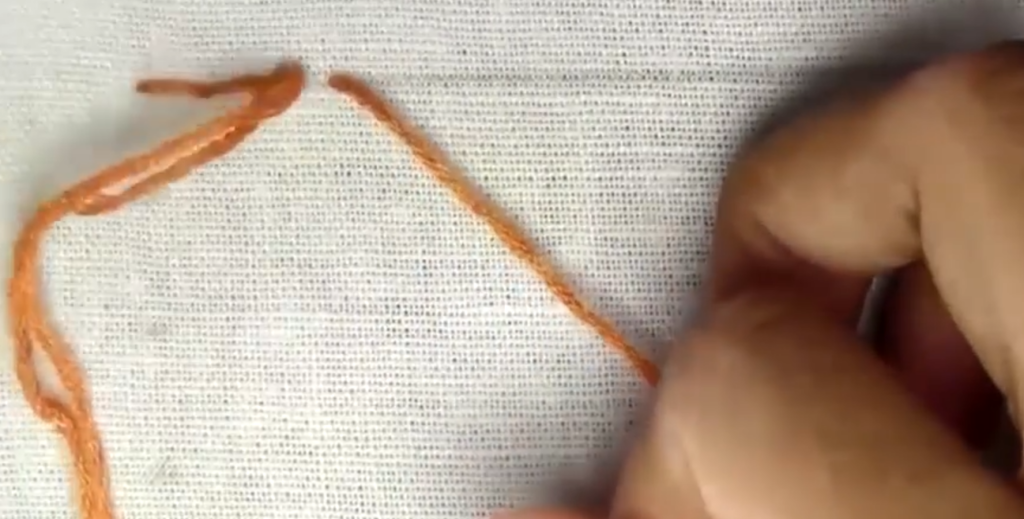Hand embroidery, a traditional art, not only demonstrates skillful craftsmanship, but also adds a unique decorative touch to a variety of fabrics. Whether it is clothing, bedding or artwork, embroidery can give it a unique life and beauty. For beginners, mastering basic embroidery stitches is the key to learning embroidery. Today, we will introduce you to ten hand embroidery stitches for beginners, which are not only basic and practical, but can help you lay a solid foundation for embroidery and gradually improve your skills.

Flat Needle Embroidery: the most basic embroidery stitches
Flat needle embroidery, also known as quilting embroidery, is one of the most common hand embroidery stitches. It is a simple stitch for those who are just starting to learn hand embroidery. Repeated inward and outward stitches are performed from right to left through even stitch spacing to create a flat embroidery stitch. Flat stitch embroidery is suitable for edge decoration or basic patterns. If you wish to embroider a simple border or pattern, flat stitch embroidery is the ideal choice.

Backstitch stitch: firm filling
Backstitch stitch is a very firm hand embroidery stitch that is often used to fill larger areas of a pattern or where strength is needed. By backstitching from left to right, it increases the stability of the embroidery and prevents the stitch from loosening. The backstitch stitch is often used to fill in large areas of the background or detailed parts, which can make the embroidery more durable and the pattern more full.

Split Stitch Embroidery: Creating a beautiful effect in the shape of a braid
Split Stitch Embroidery is a highly skillful embroidery stitch that is often used to fill in flowers or complex patterns. By splitting the first stitch in half and passing the second stitch through the split part, a unique braid shape is formed. This stitch not only adds layers to the pattern, but also makes the embroidery work more lively and interesting. Split-stitch embroidery is often used for decorative embroidery, and is especially suitable for floral and botanical patterns.

Stem stitch: detailed depiction of flower stems
Stem stitch is mainly used to draw the stems and outline lines of flowers. The stitch is slightly more complex and requires that the stitch spacing be kept even each time and that the stitches be kept neat while embroidering. With this stitch, the details of the flowers can be emphasized and the whole embroidery work will look more delicate. Flower stem stitch is an important step for beginners to advance, and learning it will allow you to better manage complex botanical patterns.

French Knot (French Knot): the secret to a three-dimensional effect
The French Knot, also known as Bean Stitch, is a technique that gives a three-dimensional effect to a flat embroidery piece. By twisting several loops of thread to form a small knot-like pattern, it makes the embroidery work visually richer. French knots are often used for stamens, eyes, or other details of flowers, and are an important step for beginners to learn as they give their work a more vivid and interesting visual effect.

Chain Embroidery: Elegant Chain Effect
Chain Embroidery is shaped like a chain and is often used for decorative motifs such as branches or loops. Each stitch needs to maintain an even strength and consistent spacing to form a coherent ring structure. Chain embroidery can add a unique decorative effect to the embroidery work, especially suitable for embroidering the parts of flower branches or modeling lines.

Feather Embroidery: Natural and Smooth Feather Effect
Feather embroidery is stitched like a feather, using continuous left and right stitches. It is often used in the decoration of branches, leaves or strips of decorations to add a sense of nature and flow to the embroidery work. Feather embroidery needs to ensure the uniformity of the downstroke in order to present the desired effect.

Satin Embroidery Stitch: The Perfect Filling Technique
The Satin Embroidery Stitch is a very basic filling technique that is usually used to fill in the interior of a pattern. The key to it is to embroider the threads neatly side by side to create a smooth surface. Despite the simplicity of the satin embroidery stitch, it is not easy to embroider neatly, so it requires special attention to detail on the part of the beginner. This stitch has a very important role in the filling of the pattern and is a must learn skill for every embroidery enthusiast.

Daisy Embroidery: Lovely Little Flower Effect
Daisy embroidery stitch is mainly used in the production of patterns such as flower petals and leaves. It is characterized by simple stitches and is suitable for beginners to practice. When embroidering, you can flexibly adjust the size of the stitches to make the petals and leaves look more vivid. Daisy embroidery is the perfect embroidery technique for decorating small flowers, grass and leaves and other elements.

Cinnamon Embroidery: a delicate crossover technique
Cinnamon embroidery is an embroidery technique done by alternating short threads. By alternating threads horizontally and vertically to fill in a designated area, the entire embroidered area can be completed quickly and evenly. Cinnamon embroidery is characterized by its speed and uniformity, making it suitable for large areas that need to be filled quickly. For beginners, cinnamon embroidery can help you quickly improve your filling abilities.

Embroidery Tools Needed
Learning hand embroidery is not just about mastering the needlework, you also need some basic tools. The following are commonly used embroidery tools for beginners:
- Embroidery cloth: usually use plant fiber cloth, such as cotton or linen. For high-end works, the use of silk or cashmere fabric will be better.
- Embroidery thread: different embroidery thread for different materials, common cotton embroidery thread, silk thread and gold and silver thread.
- Embroidery Needle: Pick a suitable embroidery needle and pay attention to the shape of the needle nose to avoid hooking the thread.
- Embroidery shed: Embroidery shed is a tool to keep the cloth surface flat, which can help you embroider better.
- Embroidery stand: you can fix the embroidery shed to ensure a comfortable embroidery experience.

Hand embroidery is a creative and fun art form. Mastering basic embroidery stitches and applying them to different designs is a must for every embroidery enthusiast. From flat embroidery to cinnamon embroidery, each stitch can add a unique charm to your work. If you are just starting to learn hand embroidery, try starting with these basic stitches and keep practicing and your embroidery skills will improve significantly.



